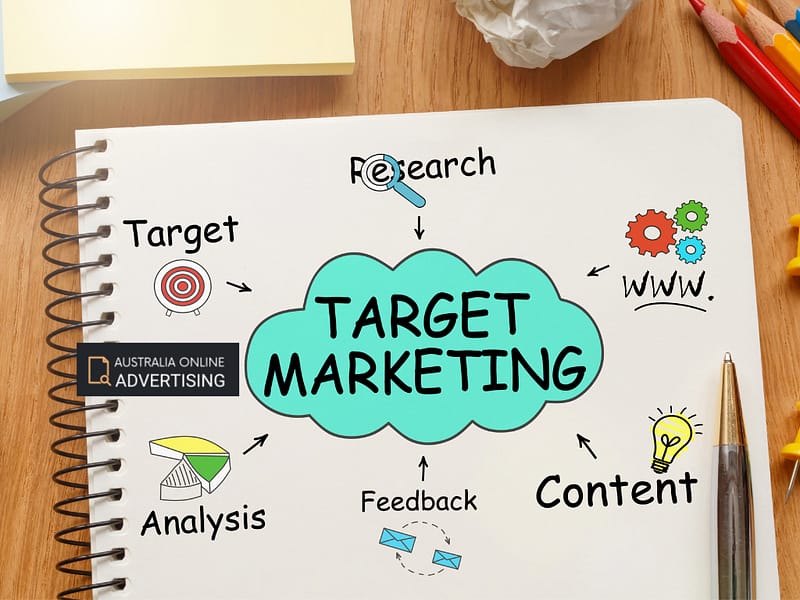In online advertising, targeting the right audience is crucial. Audience targeting means focusing your ads on specific groups of people who are most likely to be interested in your products or services. Instead of showing your ads to everyone, you choose who sees them based on traits like age, location, or interests.
Many businesses advertise online to reach audiences that match their goals, whether it’s attracting local customers or connecting with a global market. By using precise targeting, businesses can make the most of their advertising budget and see better results.
As we explore how to target specific audiences, you’ll see that there are different methods to reach the right people. From demographics to interests, each method allows you to refine your reach and maximise ad effectiveness. Let’s look at some of the main methods businesses use to advertise online effectively.
Key Methods Used to Target Audiences Online
- Demographic Targeting: This method focuses on basic details about your audience, such as age, gender, education, or income level. For example, if you’re selling skincare products, you might want to target adults aged 25-45.
- Interest Targeting: Interest targeting lets you reach people based on things they like or enjoy. Social media platforms are great for this because they track user interests through posts, likes, and interactions.
- Behavioural Targeting: This approach focuses on the actions people take online, such as the websites they visit, their shopping history, or past purchases. Behavioural targeting is especially helpful if you want to reach people ready to buy. For instance, an ad for travel deals could be shown to people who have recently browsed vacation packages.
Even free online advertising platforms, like social media, offer some level of audience targeting. Although options may be limited compared to paid ads, you can still target people based on location or interests to a certain extent.
How Social Media Platforms Use Audience Data for Ads
Social media platforms, like Facebook, Instagram, and Twitter, have become powerful tools for online advertising because of their rich data on user behaviours and interests. When users interact with content, the platforms collect information on what they like, share, and comment on. This data allows businesses to target audiences with more precision.
For example, if a business wants to reach local customers, they can use free business directory australia options or social media settings to target specific regions. Many platforms allow users to set geographic parameters so that only people in certain areas see the ad. This is particularly useful for local businesses aiming to drive foot traffic.
Through the use of social media ads, local directories, or even Guest Posting on industry-specific sites, businesses have a range of tools to connect with relevant audiences. By using these targeting options, companies can make their advertising budget go further and reach those who truly matter to their business goals.
The Role of Keywords in Online Advertising and Guest Posting
Keywords play a major role in helping businesses connect with interested audiences. By using specific words or phrases that people commonly search for, companies can increase the chances of their ads being seen by the right people. In paid ads, keywords tell search engines what your ad is about, helping it appear when users search for related topics.
Guest Posting is another effective way to reach target audiences. When businesses contribute articles to relevant websites, they can include keywords that link back to their own site or product page. This approach not only boosts visibility but also directs traffic from people who are likely interested in their offerings.
For those who advertise online, keyword planning is essential. By selecting keywords based on what customers are searching for, businesses can attract more clicks and increase engagement. Keyword tools and search trends provide insights into what words or phrases are popular, making it easier to choose the most effective terms.
Benefits of Using Targeted Online Advertising
Targeted online advertising has a range of advantages that make it a smart choice for businesses. First, it leads to higher engagement. By showing ads only to people who are interested, businesses are more likely to receive clicks, likes, and shares. This increases the overall effectiveness of the ad and builds a connection with potential customers.
Another major benefit is better return on investment (ROI). Since targeted ads focus only on specific audiences, they’re more efficient. Businesses save money by avoiding ads shown to people who aren’t interested. This efficient reach also allows them to get more value out of their ad spend, even with smaller budgets.
What’s more, some free online advertising options, like social media, offer basic targeting tools. These free options allow businesses to specify things like location or interests to ensure ads reach relevant audiences, even without a big budget. By using targeted advertising, businesses of all sizes can enjoy a more effective approach to connecting with their audience.
Tips for Maximising Audience Targeting in Your Online Ads
- Experiment with Different Audience Settings: Don’t be afraid to test various targeting settings. Try adjusting demographics, interests, and behaviours to see what combination works best for your goals. Each tweak can give insights into which groups respond best to your ads.
- Use Platform Insights: Many ad platforms, like Google Ads and Facebook Ads, offer insights into audience behaviour. Use these insights to understand how your audience interacts with your ads. This data can guide adjustments, making ads more aligned with your audience’s preferences.
- Review Campaign Results Regularly: After each campaign, take time to review the results. Look at metrics such as click-through rate (CTR), engagement, and conversions to see if your targeting was effective. Regularly reviewing results helps you refine your strategy over time.







